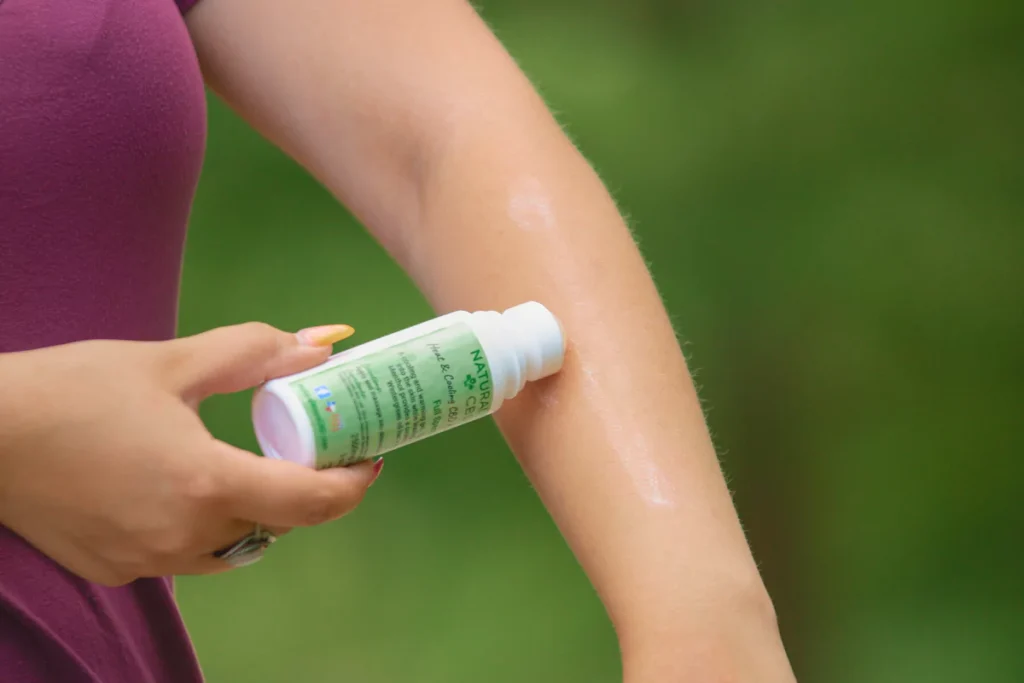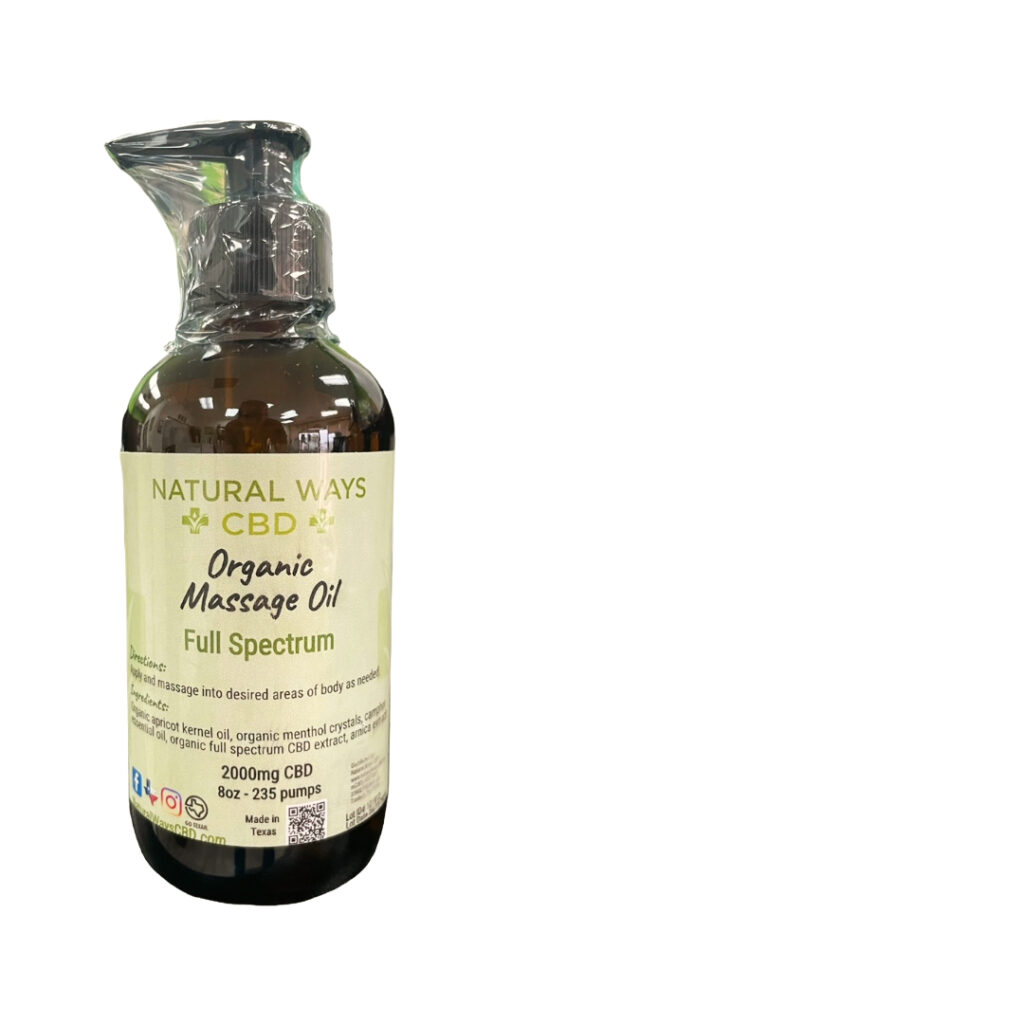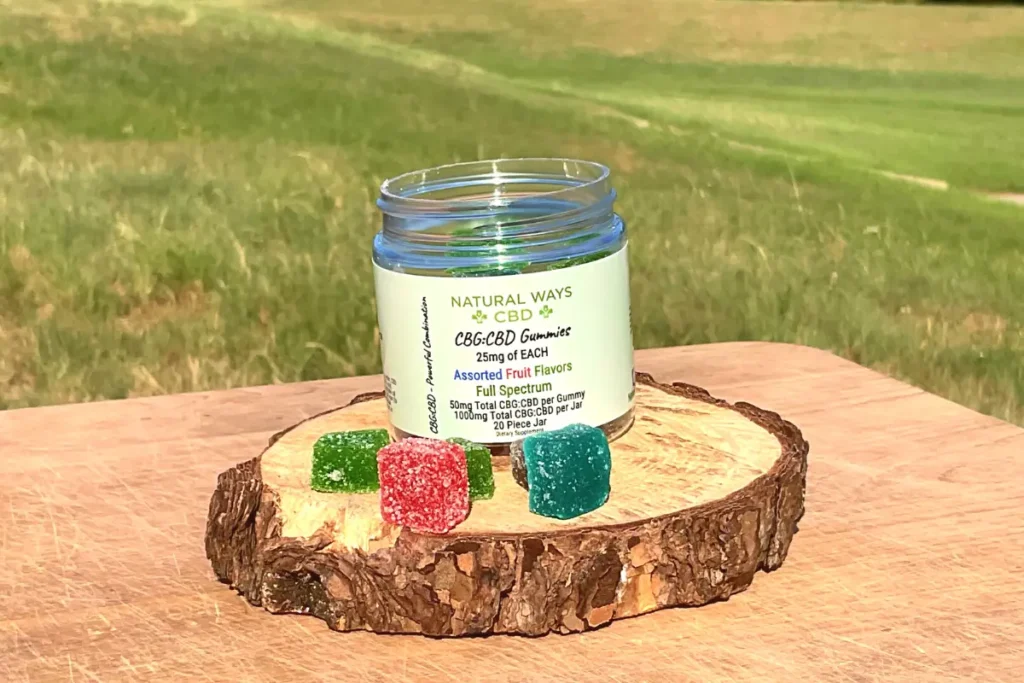With time and consistency, tendonitis isn’t hard to treat (or prevent). But that doesn’t mean you need to be in pain while you’re waiting for your body to heal.
It also doesn’t mean that you have to take over-the-counter painkillers: CBD is an all-natural option that promotes healthy inflammatory and pain responses and has benefits for those struggling with tendonitis.
So while CBD isn’t a replacement for traditional treatment methods, it may be a beneficial supplement.
In this article, we’ll discuss the potential benefits of CBD for tendonitis, based on what the research says.
TAKEAWAYS:
- Studies suggest that CBD can regulate the inflammatory and pain response, and this may also apply to tendonitis-related discomfort.
- CBD cream for tendonitis can be applied directly to the affected area, where it can absorb and promote deep-skin relaxation.
- CBD oil and gummies for tendonitis can promote comprehensive, full-body relaxation.
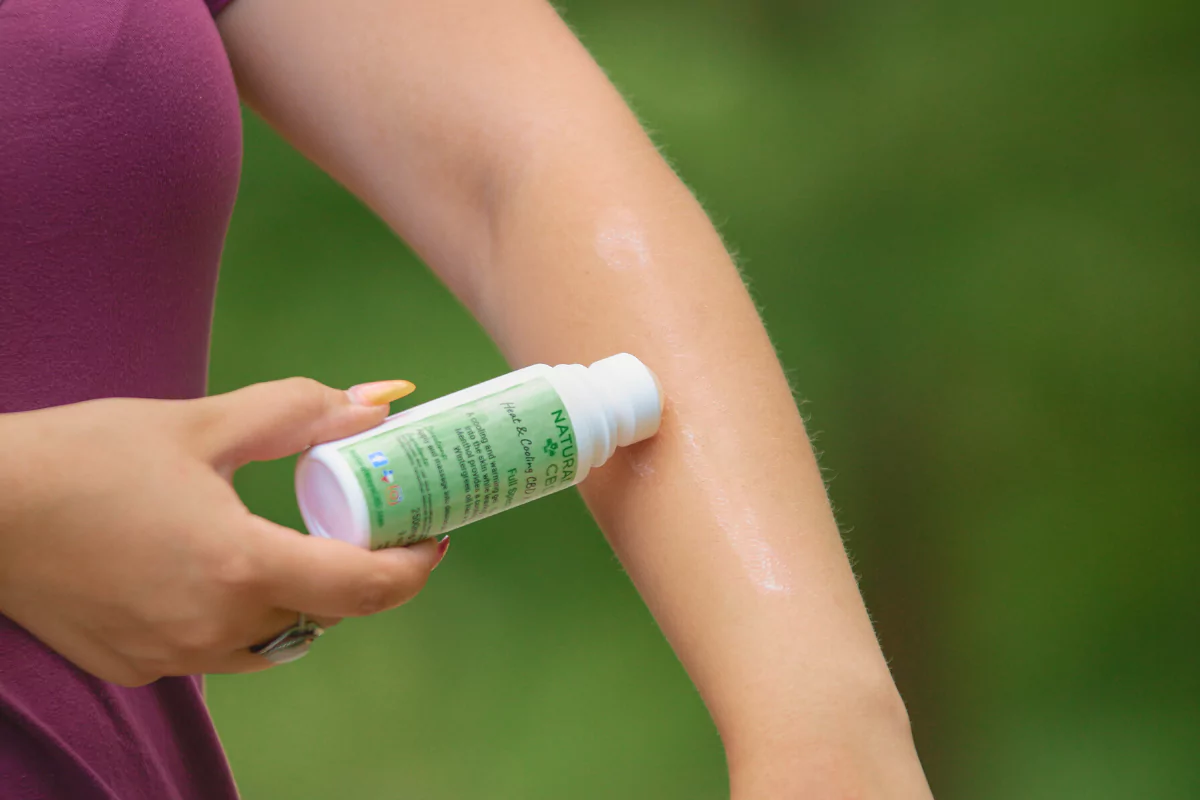
What is CBD?
Cannabidiol (CBD) is a naturally-occurring cannabinoid in the cannabis sativa plant (hemp is cannabis sativa that contains less than 0.3% THC by dry weight).
There are more than 100 cannabinoids in the hemp plant, but CBD is one of the most commonly used because of its high abundance and potential therapeutic uses. It’s been researched for pain and inflammation, as well as for things like anxiety, insomnia, and epilepsy.
Unlike THC, CBD is not inebriating. It is technically psychoactive, in that it affects the mind, but its effects are mild feelings of calm and relaxation, rather than the feelings you’d normally associate with a high.
What is Tendonitis?
Tendonitis (also spelled “tendinitis”) is the inflammation of the tendons, the thick fibrous cords that attach your muscles to your bones.
Tendonitis is characterized by feelings of pain and tenderness just outside the affected joint. It can happen in any tendon, but it most commonly occurs in the shoulders, elbows, wrists, knees, and heels.
Types of Tendonitis
There are a few main types of tendonitis:
- Lateral epicondylitis (tennis elbow) — Characterized by pain in the forearm and inside of your elbow on the side of your arm closest to you, when your arm is by your side with your palm facing backward.
- Medial epicondylitis (golfer’s elbow or baseball elbow) — With golfer’s elbow, pain is felt from the elbow to the wrist on the inside of the forearm.
- Rotator cuff tendonitis (biceps tendonitis) — A shoulder disorder that causes inflammation of the shoulder capsule and related tendons.
- Achilles tendonitis – Inflammation of the achilles tendon, which connects your calf muscle to your heel. Pain is felt along the back of the leg near the heel.
- DeQuervain’s tenosynovitis — The most common type of tenosynovitis, which is a type of tendonitis. DeQuervain’s tenosynovitis is swelling of the tendons on the thumb side of the wrist that attach to the base of the thumb.
- Trigger finger or trigger thumb tenosynovitis — Characterized by the tendon sheaths in your fingers and/or thumbs becoming inflamed and thickened. This makes extending or flexing your fingers or thumbs very difficult, and may also cause your finger or thumb to lock, or “trigger”, suddenly.
Symptoms of Tendonitis
The symptoms of tendonitis vary depending on the type, but generally include some or all of the following:
- Feelings of pain in a tendon that get worse during movement
- Difficulty moving the affected joint
- Experiencing a grating or crackling sensation when you move the affected tendon
- Swelling of or near the affected area, sometimes with warmth or redness
Common Treatments For Tendonitis
Treating tendonitis may be as simple as resting the affected area. However, it may also involve medication. Here are the most common ways tendonitis is treated:
- Home remedies — Resting can improve tendonitis. Ice also works, be it applying an ice pack or soaking in an ice and water bath. Compression of the affected joint can also help to reduce swelling.
- Physical therapy — Physical therapy is commonly used to help tendonitis patients recover full range of motion in the affected joints.
- Medications — Anti-inflammatory drugs, like aspirin, ibuprofen, and aleve can help reduce tendonitis pain. Pain relief creams, like topical NSAIDs, capsaicin, arnica, and menthol can also help. Steroid shots are also sometimes used for tendonitis pain, though sparingly.
- Surgery and related procedures — If your tendon is badly injured, surgical repair may be required. Another treatment for tendonitis is dry needling, in which small holes are made in the tendon with a very fine needle in order to stimulate healing.
Does CBD Help With Tendonitis?
While there are already several proven methods for addressing tendonitis pain, is CBD another alternative that may be effective?
Research suggests CBD may have benefits for tendonitis. Studies indicate that CBD has anti-inflammatory and analgesic (pain-reducing) properties, and it’s been researched for arthritis, of which tendonitis is a close cousin.
However, CBD is not a proven treatment for tendonitis, and more studies are needed. At this point, it’s best regarded as a supplement, rather than a treatment.
Research on CBD for Tendonitis: How It Helps
Several studies suggest CBD has therapeutic potential for people with tendonitis. Here’s a look at some of the research.
Research on CBD for pain & inflammation
Research suggests CBD has analgesic, or pain-reducing, and ant-inflammatory effects [1].
In 2021, scientists conducted a survey of 253 CBD users to better understand how effective it is for pain. Overall, results were positive: participants reported that CBD helped their pain (59.0%) and allowed them to reduce their pain medications (67.6%) [2].
A 2017 peer-reviewed book examined a number of studies and found that CBD had beneficial effects on both chronic and acute pain [3].
Research on CBD for arthritis
Arthritis is not tendonitis, but the two conditions are closely related. Arthritis affects the joints, whereas tendonitis affects the tendons, which connect the joints and bones.
A 2016 study found that topical (on the skin) CBD application has therapeutic potential for arthritis pain and inflammation [4].
Additionally, a research review found that CBD oil has anti-inflammatory properties for rheumatoid conditions, including arthritis [5].
Research on CBD for arthritis isn’t a proxy for determining how well CBD works for tendonitis, but it gives us a look at how CBD may promote physical relaxation in inflammatory conditions.
Research on CBD for sleep
Research suggests CBD can promote restful sleep, which is often in short supply for people dealing with tendonitis.
A 2017 research review found that CBD has therapeutic potential for several sleep conditions, but that more studies are needed [6].
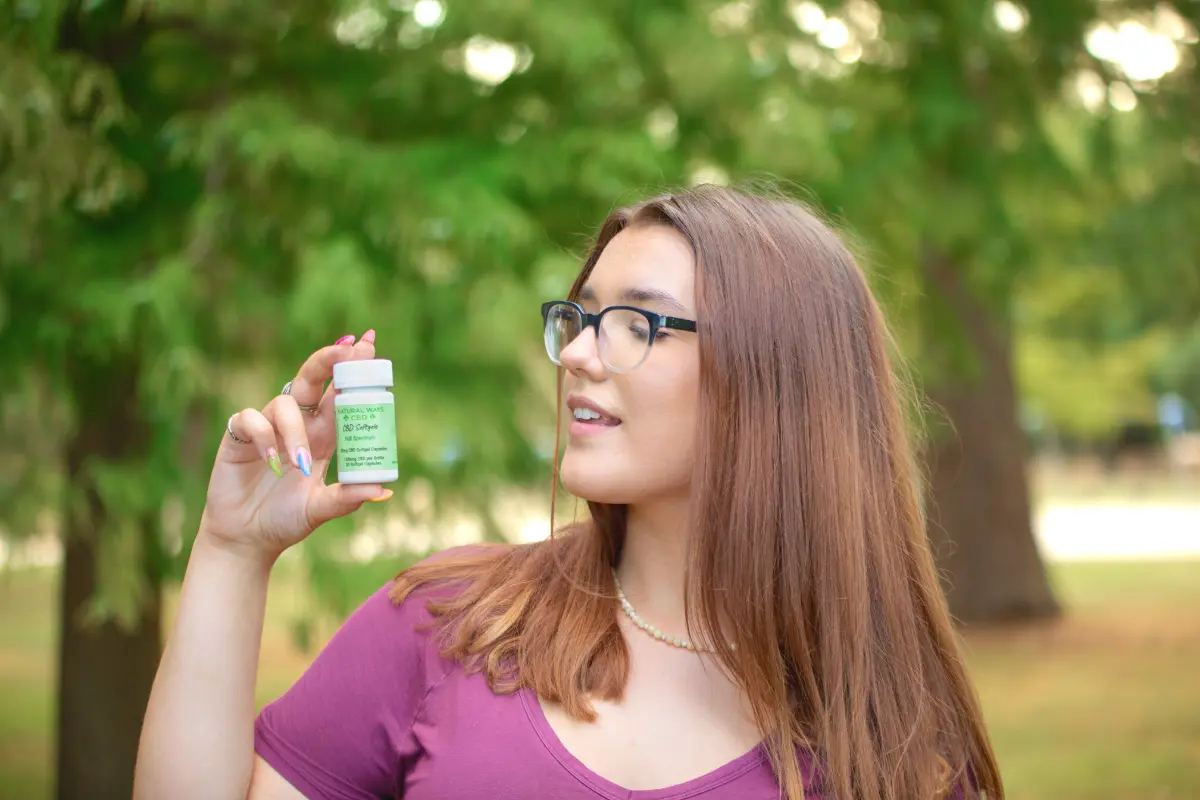
How Does CBD Work for Tendonitis?
CBD works by supporting your endocannabinoid system (ECS). The ECS is a receptor system in your body that’s responsible for regulating your vital functions, including the inflammatory and pain responses.
There are two types of receptors in your ECS:
- CB1 receptors, which produce mental effects when interacted with
- CB2 receptors, which produce physical effects when interacted with
Although CBD doesn’t bind to the CB1 or CB2 receptors as many cannabinoids do, research suggests that it supports the function of your ECS by preventing the breakdown of its processes [7].
There is also research suggesting that CBD can help with pain by increasing the levels of anandamide, an endocannabinoid, and serotonin, a neurotransmitter, in your body [8,9]. Higher levels of both are associated with a reduction in pain sensations.
More clinical research is needed before we truly know how reliable CBD is and to what extent it may benefit people with tendonitis.
But the research we have so far is promising, and so are the first-hand accounts of people who report that CBD has changed the way they live their life.
Which CBD Product Should You Use for Tendonitis?
If you’ve tried shopping for CBD, you know there are quite a few types of products out there. But which one is the best for tendonitis? In this section, we discuss the different types of CBD and CBD products.
Types of CBD
Before discussing products, it’s important to be aware that there are three different types of CBD:
- Full-Spectrum CBD — Primarily CBD, but contains other cannabinoids that naturally occur in hemp, such as CBG, CBN, CBC, and THC, as well as terpenes. This is the most beneficial type of CBD because all of the cannabinoids work together to provide amplified therapeutic effects — this is known as “the entourage effect.”
- Broad-Spectrum CBD — The same as full-spectrum CBD, but without THC. A good option if you have to undergo drug testing and can’t have THC in your system.
- CBD Isolate — Just CBD, with no other cannabinoids.
For tendonitis, full-spectrum CBD is generally your best bet (unless you can’t take it for drug testing reasons).
Topical CBD (Creams, Roll-Ons)
CBD topicals, such as CBD cream, roll-on, salve, and so on, offer a way to deliver targeted relaxation to the affected joints. Topical CBD can start working in just 10-15 minutes.
The downside with topical CBD products is that you won’t get full-body benefits. Although the topical can soothe your joint, it won’t have a direct impact on things like sleep, anxiety, or stress because it doesn’t deliver CBD to your bloodstream.
CBD Oil/Tinctures
CBD oil taken under the tongue, then swallowed. CBD oil works in just 10-15 minutes, as topicals do, but it delivers relaxation throughout the body, rather than locally. CBD oil can also be dosed down to the drop.
The only downside of this delivery method is taste — CBD oil can be a bit bitter.
Oral CBD (Edibles, Drinks, Capsules)
Oral CBD, be it an edible, drink, or capsule, is a quick, great-tasting way to get CBD. And as with CBD oil, you’ll get mental and physical relaxation if you ingest CBD in an edible form. The effects can be felt in 45 minutes to 1 hour.
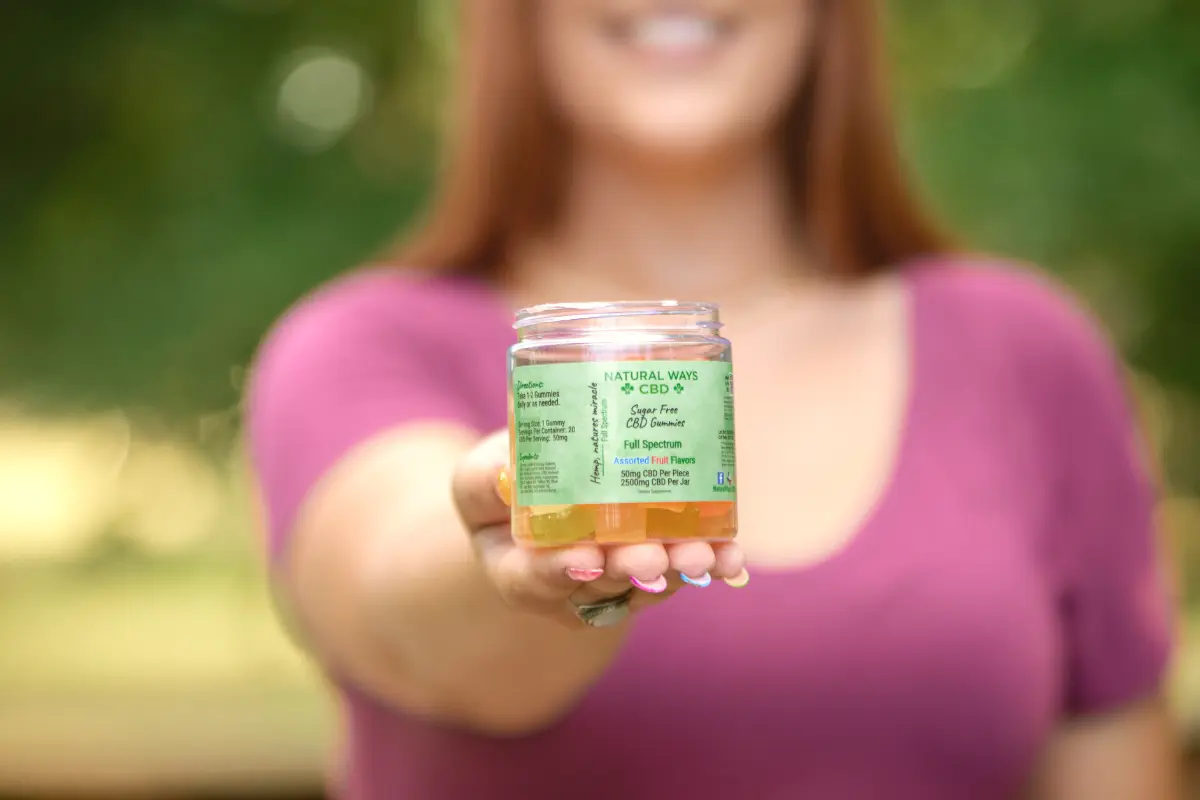
CBD Dosage for Tendonitis
We recommend starting with a medium-strength dosage of CBD for tendonitis. You can calculate it using this formula:
(0.3) x (your body weight in lbs) = your daily dosage of CBD in mg.
For example, if you’re 150 lbs, you’ll start by taking 45mg of CBD per day.
As you go, you can dial this dosage up or down depending on how you feel after taking it.
These CBD dosing guidelines don’t apply if you’re using CBD topicals. Instead, we recommend you reference the company’s directions (and experiment) to determine how much you should apply.
Side Effects of CBD
Though CBD has many benefits for tendonitis, it also has a few side effects to be aware of:
- Nausea
- Dry Mouth
- Drowsiness
- Diarrhea
- Reduced appetite
- Fatigue
If you start with small doses and work your way up, these side effects will either be very mild or not an issue at all.
Best CBD Cream for Tendonitis: 3 Top Picks for 2024
If you’re looking for the best CBD cream for tendonitis, here are three top products. Each pick is 3rd-party lab-tested, made with American-grown hemp, and highly effective:
1. Best Overall CBD Cream for Joint and Tendon Relaxation: Natural Ways Canna Cream CBD Topical

Type of CBD: Full-spectrum CBD
CBD Potency: 2000mg
Size: 2 oz.
Price: $60.00
Our Full-spectrum CBD Canna Cream brings the best of both worlds: a potent dose of CBD and a myriad of beneficial natural ingredients.
The 2000mg of full-spectrum CBD contained in each pump delivers deep soothing and relaxation in and around the joints. The natural ingredients intensify these benefits while also enhancing skin health and boosting your skin’s absorption of the cream.
This topical contains:
- Arnica, a natural herb that reduces swelling and pain
- Lidocaine, a pain-reducing cream
- Shea butter, a natural fat that has soothing properties for the skin and benefits for conditions like eczema, dermatitis, and burns
- DMSO, a skin-safe substance that improves the skin’s absorption of topical products
By combining these ingredients, we’ve made a CBD cream that may benefit many people with tendonitis, back pain, and other joint and body pains. Oh, and it’s easy on – and beneficial for – your skin.
Although new to our online store, we’ve sold our Canna Cream CBD topical in our six brick-and-mortar stores for almost 5 years – in that time, we’ve gotten the best kind of feedback: people coming back to our stores and telling us face-to-face about how this product helped them.
We can’t wait for you to try it.
Click here to shop Canna Cream
2. Best CBD Cream for Back & Neck Discomfort: Medterra CBD Pain Relief Cream

Type of CBD: CBD Isolate
CBD Potency: 500mg or 1000mg
Size: 1.7 oz.
Price: $39.99 (500mg) or $59.99 (1000mg)
Medterra’s CBD Pain Relief Cream combines powerful amounts of Arnica and Menthol with CBD and other botanical ingredients to promote deep relaxation.
It’s formulated for back soreness, neck stiffness, and joint pain. With up to 1000mg CBD per stick, it’s sure to deliver on its promises.
Medterra has taken extra care to ensure its cream is safe and absorbs well into the skin: this product is free of plasticizers, artificial preservatives, and synthetics.
Click here to shop Pain Relief Cream
3. Best CBD Topical for Muscle Recovery: Lazarus Naturals Relief + Recovery CBD Muscle Gel

Type of CBD: Full-spectrum CBD
CBD Potency: 600mg or 2000mg
Size: 1 oz. (600mg CBD) or 3.38 oz. (2000mg CBD)
Price: $12.00 (600mg CBD) or $32.00 (2000mg CBD)
Lazarus Naturals Relief + Recovery CBD Muscle Gel is formulated with full-spectrum CBD, menthol, and capsaicin to provide maximum muscle and joint support for active lifestyles.
The full-spectrum CBD promotes deep muscle relaxation, while the capsaicin delivers anti-inflammatory and pain-relieving benefits. The menthol ties it all together by providing a cooling effect.
Whether you’re recovering after a hard workout or promoting everyday mobility, this CBD cream from Lazarus Naturals will do the job.
Click here to shop Relief + Recovery CBD Muscle Gel
Conclusion: Can CBD Help With Tendonitis?
Though CBD is not a treatment for tendonitis, it has the therapeutic potential to help you as you navigate the pain, inflammation, and other problems that come with tendonitis.
Just be sure to speak with your doctor before using CBD — they have the knowledge and experience to know whether it’s a good option for you, or if you need to pursue other methods of managing and treating tendonitis first.
Related Condition: Is CBD Good for Bursitis?
CBD for Tendonitis: Frequently Asked Questions
Here are some questions we’re commonly asked about using CBD for tendonitis.
Is CBD oil good for tendonitis?
CBD oil may have anti-inflammatory effects when used for tendonitis, however, more research is needed. Generally, CBD can promote comfort and a normal, healthy inflammatory response.
Is CBD a strong anti-inflammatory?
Scientific evidence suggests CBD has anti-inflammatory properties. However, more research is needed to determine how effective CBD is relative to other anti-inflammatory supplements.
Does CBD help with healing or just pain?
CBD may promote overall wellness in addition to merely aiding in physical relaxation. However, more research is needed on CBD’s restorative properties for the body.
What is the best anti-inflammatory for tendonitis?
Over-the-counter drugs like ibuprofen, naproxen, and aspirin are some of the most commonly recommended anti-inflammatory supplements for tendonitis. However, natural supplements like hemp-derived CBD may render benefits, too.
Sources
[1] Mlost, Jakub et al. “Cannabidiol for Pain Treatment: Focus on Pharmacology and Mechanism of Action.” International journal of molecular sciences vol. 21,22 8870. 23 Nov. 2020, doi:10.3390/ijms21228870
[2] Schilling, Jan M et al. “Cannabidiol as a Treatment for Chronic Pain: A Survey of Patients’ Perspectives and Attitudes.” Journal of pain research vol. 14 1241-1250. 5 May. 2021, doi:10.2147/JPR.S278718
[3] National Academies of Sciences, Engineering, and Medicine; Health and Medicine Division; Board on Population Health and Public Health Practice; Committee on the Health Effects of Marijuana: An Evidence Review and Research Agenda. The Health Effects of Cannabis and Cannabinoids: The Current State of Evidence and Recommendations for Research. Washington (DC): National Academies Press (US); 2017 Jan 12. 4, Therapeutic Effects of Cannabis and Cannabinoids.
[4] Hammell, D C et al. “Transdermal cannabidiol reduces inflammation and pain-related behaviours in a rat model of arthritis.” European journal of pain (London, England) vol. 20,6 (2016): 936-48. doi:10.1002/ejp.818
[5] Nagarkatti, Prakash et al. “Cannabinoids as novel anti-inflammatory drugs.” Future medicinal chemistry vol. 1,7 (2009): 1333-49. doi:10.4155/fmc.09.93
[6] Babson, Kimberly A et al. “Cannabis, Cannabinoids, and Sleep: a Review of the Literature.” Current psychiatry reports vol. 19,4 (2017): 23. doi:10.1007/s11920-017-0775-9
[7] Haney, Margaret. “Cannabis Use and the Endocannabinoid System: A Clinical Perspective.” The American journal of psychiatry vol. 179,1 (2022): 21-25. doi:10.1176/appi.ajp.2021.21111138
[8] Hua, Daniel Ying-Heng et al. “Effects of cannabidiol on anandamide levels in individuals with cannabis use disorder: findings from a randomised clinical trial for the treatment of cannabis use disorder.” Translational psychiatry vol. 13,1 131. 21 Apr. 2023, doi:10.1038/s41398-023-02410-9
[9] De Gregorio, Danilo et al. “Cannabidiol modulates serotonergic transmission and reverses both allodynia and anxiety-like behavior in a model of neuropathic pain.” Pain vol. 160,1 (2019): 136-150. doi:10.1097/j.pain.0000000000001386

